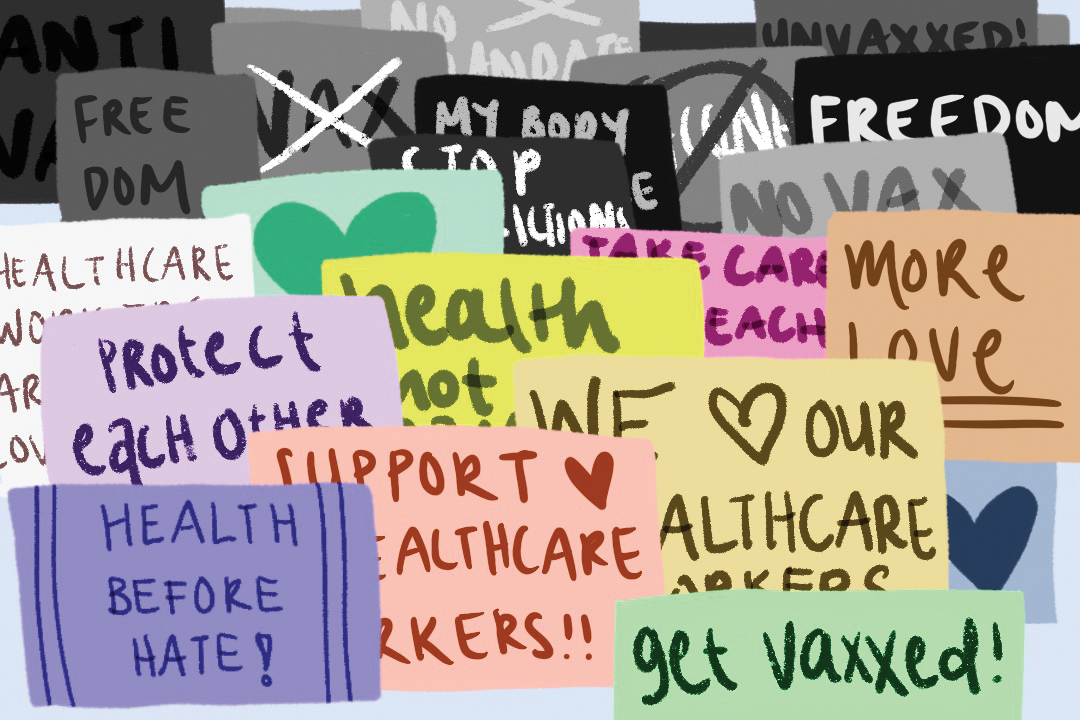Members of the Toronto medical community, including U of T faculty and affiliates, organized a counterprotest in response to the ‘freedom convoy’ protesters who have been occupying Queen’s Park on weekends since February 5. These protesters are associated with the movement against COVID-19 restrictions and vaccine mandates.
The Varsity spoke with Dr. Philip Berger, one of the counterprotest’s co-organizers, about the goals of the event and how the freedom convoy movement has affected the medical community.
Background on the convoy
The freedom convoy movement protests began in Ottawa when truckers protested against vaccine mandates for people travelling across the US border. The protest has since expanded past truckers to include other people who are more generally unhappy with COVID-19 restrictions and the Trudeau government.
Protesters sectioned off a substantial portion of Queen’s Park as well as the surrounding area. U of T closed some of its facilities during the weekend of February 5 as a result.
Protests resumed on February 12, and the university issued periodic warnings on the risk they might pose to students due to their continued presence. Premier Doug Ford also declared a state of emergency on February 11 in response to the protests.
Response from medical community
Counterprotesters were present in response to the convoy and in solidarity with health care workers. The counterprotest sought to counter the narrative perpetuated by the trucker convoy. It was attended and organized by members of the medical community.
Berger, a U of T senior medical faculty member, was one of the co-organizers of the protest. In an interview with The Varsity, Berger explained that health care workers were motivated to counterprotest after watching the convoy terrorize elderly and LGBTQ+ people, as well as people experiencing homelessness.
“Those are our patients in Toronto,” Berger said. “That provoked us to take very public action, to make sure we had a presence on the streets, and to show that we health care workers are going to care for anybody who wants it, including… those in the convoy.”
Berger said the workers were warned to avoid wearing “anything that would identify them as health care workers,” but added that health care workers would not put up with intimidation or harassment. He also noted how the trucker convoy had the potential to block major hospital routes, which could have been hazardous to patients in emergency.
He concluded by saying that advocacy was a big part of being a doctor. This protest, he said, was a perfect example of health care workers following through on that part of their job.
“We may join with other forces across the country to push back against people who are promoting illness and misery and suffering among their fellow citizens,” he added.


